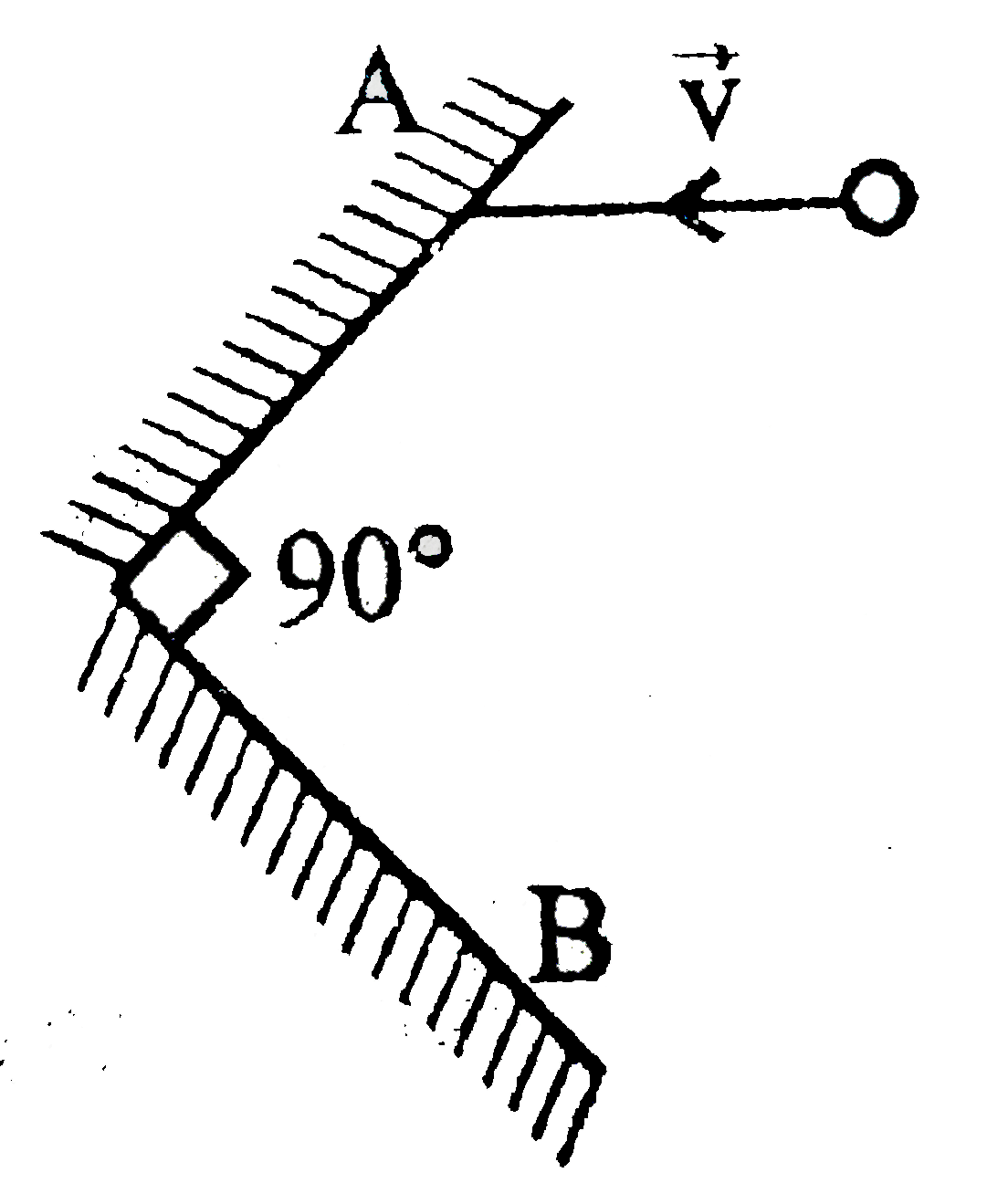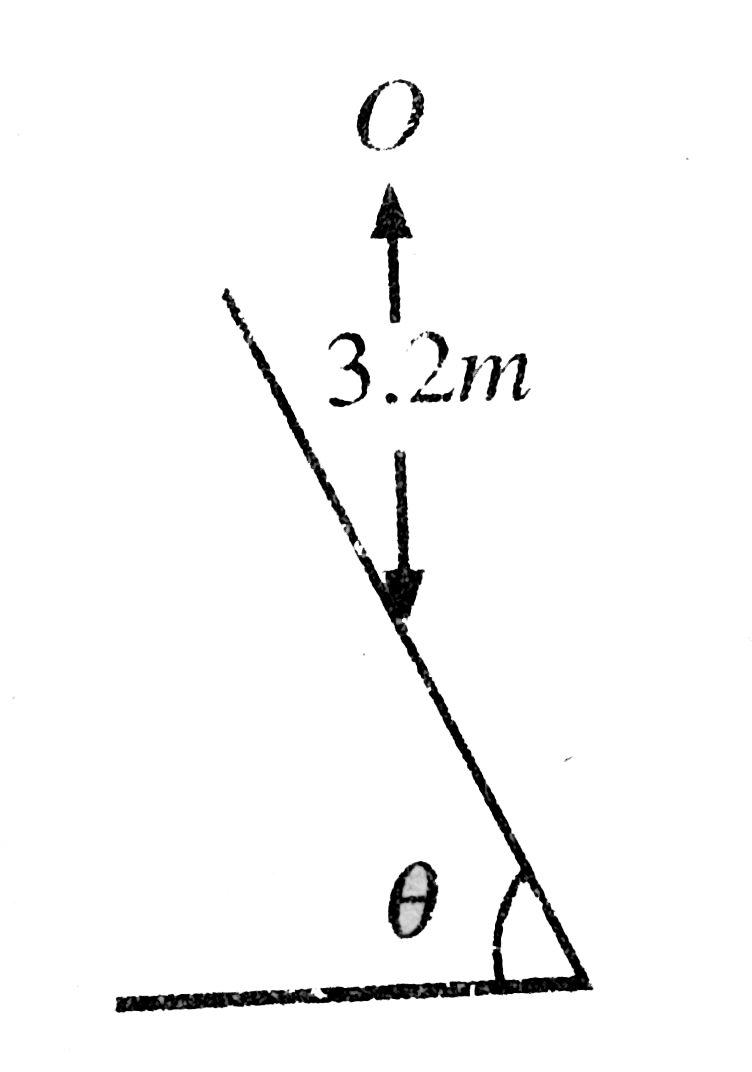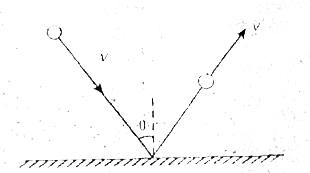AB is an L shaped obstacle fixed on a horizontal smooth table. A ball strikes it at A, gets deflected and restrikes it at B. if the velocity vector before collision is →v and coefficient of restitution of each collision is 'e', then the velocity of ball after its second collision at B is

e2→v
−e2→v
−e→v
data insufficient
The correct Answer is:3
Step by step video, text & image solution for AB is an L shaped obstacle fixed on a horizontal smooth table. A ball strikes it at A, gets deflected and restrikes it at B. if the velocity vector before collision is vec(v) and coefficient of restitution of each collision is 'e', then the velocity of ball after its second collision at B is by Physics experts to help you in doubts & scoring excellent marks in Class 12 exams.
Updated on:21/07/2023Topper's Solved these Questions
- TEST PAPERSBook:BANSALChapter:TEST PAPERSExercise:PHYSICS PART (A)
Explore 32 Videos
- TEST PAPERSBook:BANSALChapter:TEST PAPERSExercise:PHYSICS PART (B)
Explore 3 Videos
- TEST PAPERSBook:BANSALChapter:TEST PAPERSExercise:PHYSICS PART- C
Explore 4 Videos
- SEMICONDUCTORSBook:BANSALChapter:SEMICONDUCTORSExercise:CBSE Question
Explore 32 Videos
Similar Questions
A glass ball collides with an identical ball at rest with v0=2 m/sec. If the coefficient of restitution of collision is e = 0.5, find the velocities of the glass balls just after the collision.
View SolutionA ball of mass m moving with velocity u strikes another identical ball at rest. Find the velocities of the balls after the collision if the coefficient of restitution is e and the collision is head -on. Also , calculate the loss in K.E.
View Solution
Knowledge Check
A glass ball collides with a smooth horizontal surface (xz plane) with a velocity V=ai−bj. If the coefficient of restitution of collision be e, the velocity of the ball just after the collision will be
A√e2a2+b2 at angle tan−1(aeb) to the verticalB√a2+e2b2 at angle tan−1(aeb) to the verticalC√a2+b2e2 at angle tan−1(eab) to the verticalD√a2e2+b2 at angle tan−1(aeb) to the verticalA ball of mass 1kg is dropped from a height of 3.2m on smooth inclined plane. The coefficient of restitution for the collision is e=1/2. The ball's velocity become horizontal after the collision.
 Athe angle θ=tan−1(1√2)BThe speed of the ball after the collision =4√2ms−1CThe total loss in kinetic energy during the collision is 8J.DThe ball hits the inclined plane again while travelling vertically downward.
Athe angle θ=tan−1(1√2)BThe speed of the ball after the collision =4√2ms−1CThe total loss in kinetic energy during the collision is 8J.DThe ball hits the inclined plane again while travelling vertically downward.A ball falls from a height of 10m on to a horizontal plane. If the coefficient of restitution is 0.4, then the velocity with which it rebounds from the plane after second collision is
A2.24ms−1B5.6ms−1C2.8ms−1D0.9ms−1
A ball moving with speed v collides with a horizontal smooth surface at an angle θ with normal to surface as shown in figure. If coefficient of restitution of collision is e, then find v'

View SolutionA smooth wedge of mass M is kept at rest on a smooth horizontal surface . Inclined face of the wedge make an angle θ with the horizontal . A particle of mass m collides normal to inclined face of wedge . If speed of the particle just before collision is u and coefficient of restitution is e then find velocity of wedge after collision .
View SolutionA ball rolls without sliding over a rough horizontal floor with velocity v0=7m/s towards a smooth vertical wall. If coefficient of restitution between the wall and the ball is e=0.7. Calculate velocity v of the ball long after the collision.
View SolutionA sphere A impinges directly on an identical sphere B at rest. If coefficient of restitution is e , the ratio of velocities of A and B after collision is
View SolutionA ball of mass m moving with a constant velocity strikes against a ball of same mass at rest. If e= coefficient of restitution, then what will the the ratio of the velocities of the two balls after collision?
View Solution